

CREATIVE EYE The Magazine of The Royal Photographic Society Creative Eye Group No 90: 2023 Issue 1
It was my privilege to take over from David F Cooke FRPS as Chair of Creative Eye at the AGM in March. I’d like to thank David for chairing the committee over the past year and for encouraging me to step into his shoes. Although he is stepping down from the committee, David will continue in his role as the editor of the magazine. As well as being your new chair I will also continue, at least for the time being, in my roles as Membership Secretary and
From the Chair
Communications Coordinator. This is only possible because of the support I get from the rest of the team, not just my fellow committee members but also the other volunteers behind the scenes who contribute so much to keeping the Group active and relevant.

We are working hard to bring you events and activities that you will value and that will hopefully also encourage more people to join us.
To do this successfully we need your help. There are many ways you can join in. From leading a photo walk in your local area to attending our talks, contributing an article for the magazine or simply by posting your creative images and commenting on our FaceBook or Flickr social media sites. Your involvement in the Group is what makes us successful.
Clive
Editor’s Comments
Welcome to Creative Eye 2023 Issue 1
This issue contains all the accepted images from the 2022 Digital Exhibition. The images which received awards are presented, with comments, starting on page 19. Other accepted images are presented beginning on page 26.
We also have three articles and an image in the ‘How it was created’ section of the magazine.
It was only when she retired that Janie Chapman found time to pursue photography coupled with a desire to be out in the landscape. She says that she attempts to capture the moods and beauty of the world around her and is drawn to patterns colours shapes and textures. She enjoys experimenting with different camera and post processing techniques. In
her article starting on page 4, she discusses these techniques using examples.
Dominique MacLellan also uses various techniques to create her images, in particular multiple exposure and intentional camera movement. Using examples in her article which starts on page 10, she explains the creation of some of her images and what she has learned in creating them.
In his article starting on page 14, Paul O’Flanagan discusses the meaning of creativity. He also gives suggestions intended to help you with your photography and to change how you can approach and search for creativity. His discussion is supported by a number of his images each of which has a detailed captions to
explain them.
David Townshend won first prize in the Abstract Views category of the latest International Garden Photographer of the Year competition with is image ‘Abandon Hope’. In his contribution to the ‘How it was created’ section of the magazine on page 44 he explains how he created the image.
I hope you will find the content of this issue interesting and that you enjoy both reading the magazine and looking at the many images which are presented. I hope too that they will inspire and encourage you to develop your own photography.
David

2 RPS Creative Eye Group Magazine: No 90 2023 Issue 1
Creative Eye

CREATIVE EYE GROUP COMMITTEE
Chair
Clive Watkins LRPS creativecomms@rps.org

Secretary Graham Lingley LRPS cegsecretary@gmail.com
Treasurer Nigel Rea ARPS creative.treasurer@rps.org
Digital Exhibition Coordinator David Rutter FRPS creativeimage@rps.org

Membership & Communications Coordinator Clive Watkins LRPS creativecomms@rps.org
Webmaster Steve Varman LRPS creative.publications@rps.org
THE TEAM
Editor of Creative Eye magazine Dr David F Cooke FRPS davidfcooke@btinternet.com
Online
creative.talks@rps.org Print
CONNECT
Facebook facebook.com/groups/rpscg
Or search Facebook for 'RPS Creative'
Facebook Study Groups
Exclusive to Creative Eye Group members. We run small, private Facebook peer review groups to exchange images and critiques (up to 8 members per groupl). To join a group, contact Steve Varman at creative.publications@rps,org
Flickr
flickr.com/groups/rps-creative Website: rps.org/ceg
FRONT COVER IMAGE

Flame Trees by Janie Chapman LRPS
Editor: Dr David F Cooke FRPS (davidfcooke@btinternet.com)
Creative Eye is the magazine of the RPS Creative Eye Group and is provided as part of the annual subscription to the Group.
© 2023 All rights reserved. Apart from storage and viewing in its entirety for personal reference, no part of this publication may be reproduced, stored in a retrieval system or transmitted in any form without prior permission of the copyright holder. The Royal Photographic Society, the Creative Eye Group and the Editor accept no liability for the misuse of any content or for any breach of copyright by a contributor. The views expressed in this magazine do not necessarily reflect the policies of The Royal Photographic Society or the Creative Eye Group. Unless otherwise indicated, all images are from, and copyright of the authors.
The Royal Photographic Society, RPS House, 337 Paintworks, Arnos Vale, Bristol, BS4 3AR, UK, t +44 (0)117 3164450, www.rps.org, VAT Registration No.GB 753 3057 41 Registered Charity No. 1107831
Exhibition Coordinator Moira Ellice ARPS
Print Exhibition & Event Assistant Nigel Rea ARPS Print Exhibition Assistant Mick Cant Print Exhibition (Stamford Hospital) David Baxter LRPS Facebook Administrator
Rainey
Creative Portfolio Group 4 TOWARDS AN ALTERNATIVE REALITY Janie Chapman LRPS 10 MAKING CREATIVE IMAGES Dominique MacLellan 14 PHOTOGRAPHY: THE SEARCH FOR CREATIVITY Paul O’Flanagan LRPS 19 MEMBERS’ DIGITAL EXHIBITION 2022 AWARED WINNING IMAGES 26 MEMBERS’ DIGITAL EXHIBITION 2022 OTHER ACCEPTED IMAGES 44 HOW IT WAS CREATED Abandon Hope by David Townshend FRPS 46 GROUP ACTIVITIES
Talks Coordinator Jan Harris ARPS
moira.ellice13@gmail.com
Margaret
FRPS
Printed by Henry Ling Ltd, The Dorset Press, Dorchester, DT1 1HD
ISSUE 1 RPS Creative Eye Group Magazine: No 90 2023 Issue 1 3
NO 90 2023
Contents
Janie Chapman LRPS
Dominique MacLellan
Paul O’Flanagan LRPS
Rob Kershaw ARPS
WhilstI have always tried to take better than average holiday images it was not until I retired that I really found the time to pursue, what has now become a passion, for photography coupled with a desire to be out in the landscapes that I love.
I attempt to capture the moods and beauty of the world around me and often draw inspiration from locations around the coasts and countryside of the British Isles. I prefer to take places rather than people and I am drawn to patterns, colours, shapes and textures, particularly on water and the play of light and shape on
Towards an alternative reality
Janie Chapman LRPS

and through water. I enjoy experimenting with both different camera techniques and different post-processing techniques as I am always looking for the slightly unusual or different perspective.
I am drawn towards intentional camera movement, multiple exposures and long exposures to create images that do not exist in real time, but which show that the camera can be used as a creative tool that can express emotion and demand interpretation by creating images that are unique and personal to me.
I currently shoot with a Nikon mirrorless full frame Z6 and a small selection of lenses. In order to increase my creative opportunities, I have recently bought a flatbed scanner and had a Nikon D7200 converted to infrared. I prefer not to have a second system of camera or lenses and rarely embrace the latest gizmos and apps. Instead, my choice is to know and understand my chosen equipment and tools in some depth and here continuous learning is vital.
Like many of you, the last three years have changed my photography not only in the challenges of finding beauty in ordinary things and getting to know my local patch better; but, also in the time and space that has allowed me to explore, learn and experiment more. The introduction of Zoom for training as been especially valuable to me and I wish to pay particular credit to the BaileyChinnery “First Steps” programme and the RPS Photoshop Programmes by Celia Henderson.
Many of my images are not planned but are taken when out walking with my dog. I simply carry

4 RPS Creative Eye Group Magazine: No 90 2023 Issue 1
Shoreline
“The real voyage of discovery is not in seeking new lands but in having new eyes”
Marcel Proust “In Search of Lost Time”
one lens (which may vary), a polariser and a variable neutral density filter. I am looking for something that pleases me or catches my eye and will have potential to present an altered reality.
I take my ICM images in camera, but although I have tried to perfect the in-camera multiple exposure and appreciate the glories that it can bring out in the field, I prefer to work in the more controlled environment of Photoshop often at night when my world is sleeping. Here I can experiment and play to my heart’s content, applying a range of appropriate techniques across both Lightroom and Photoshop and with imagination and intuition transforming the image in front of me to something that I find more interesting, challenging and exciting. This for me is often when the magic happens.
The images that I have decided to share with you here reflect those feelings.
“Shoreline” and “Flame Trees” are both simple panning intentional camera movement shots (ICM) using my preferred sweet spot shutter speed of between 0.5 and 2 seconds. Both encapsulate the types of landscapes that delight me.

Often, I will take two images of the same subject – one sharp and one ICM and blend them together in Photoshop. “Winter Sun” is an example of this technique.

RPS Creative Eye Group Magazine: No 90 2023 Issue 1 5 JANIE CHAPMAN LRPS S
Flame Trees
Winter Sun
“Twin Teasels” and “Bleak Beauty” are both single images with the base image horizontally flipped in Photoshop and the Soft Light Blend Mode applied. It is the symmetry that appeals to me here and the lovely intricate patterns, shapes and colours that were initially fine-tuned in Lightroom to produce my desired effects. Another aspect that I am exploring is the use of textures on landscapes to achieve a more painterly effect. “Tranquility” is a single exposure image with a Lightroom custom pre-set applied
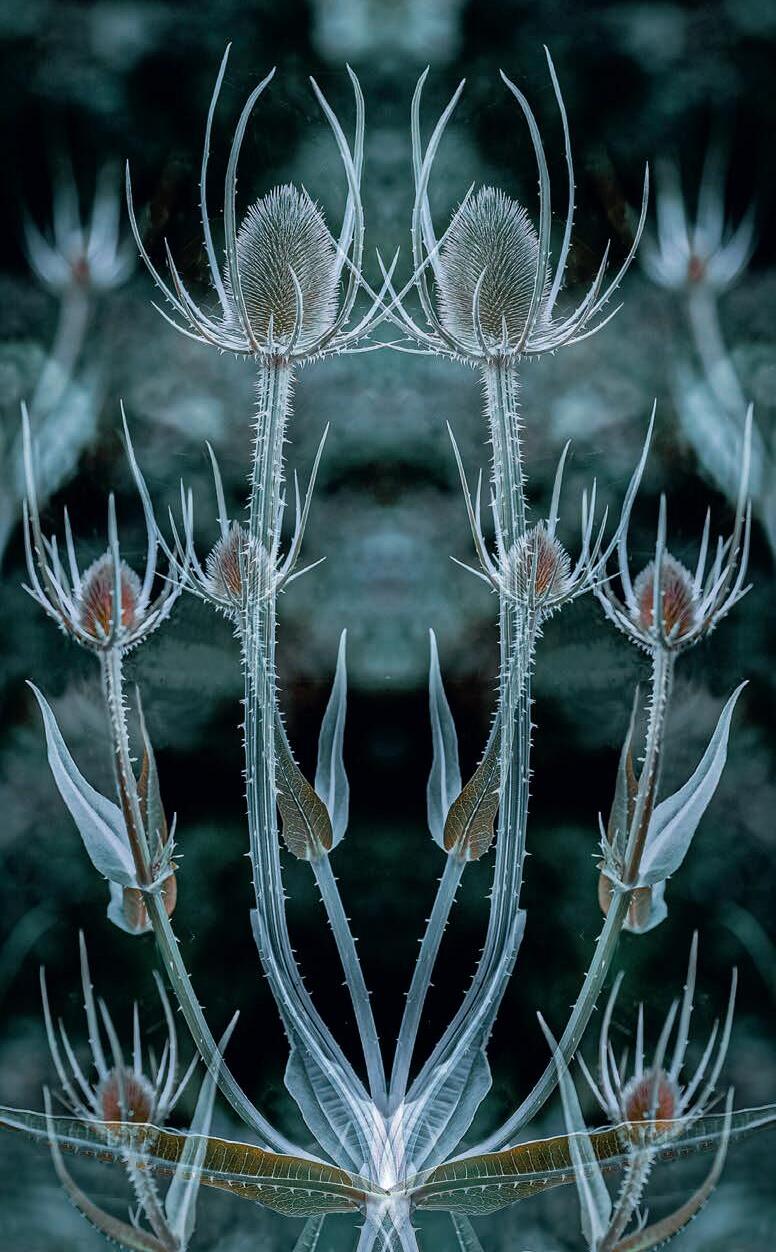
6 RPS Creative Eye Group Magazine: No 90 2023 Issue 1 JANIE CHAPMAN LRPS
Twin Teasels
Bleak Beauty
Tranquility

to limit the colour palette. The base image was then taken into Photoshop and using the Transform Tool a duplicate was carefully stretched and realigned to create a more satisfying image, but all the while paying particular attention to composition. This was then blended using the Multiply Blend Mode. Two complementary textures were then added to increase the feeling of depth and provide a more impressionistic look and feel to the image.

RPS Creative Eye Group Magazine: No 90 2023 Issue 1 7 JANIE CHAPMAN LRPS
“Fairy Dancers” is a new venture for me as the original base image was a simple scan of a sprig of Eucalyptus leaves taken from my garden against a black background. The base image was then duplicated and rotated to provide a successful composition and the Photoshop Twirl Filter sparingly used. In addition, the layer was inverted (taking the colour from turquoise and black to what you see here). I then created a texture using watercolour brushes and a colour swatch taken from the image. This was then layered on top of the image and the Soft Light Blending Mode used to create the background effect. An additional texture effect was created using the Photoshop Texturiser Tool canvas option (sparingly). Finally, a border was created using Layer Styles with the colour selected from the image.
By contrast both “Lily Ponds” and “Along the Strand Line” are single shots taken with my infra-red camera but processed in Lightroom as colour images. Although I have many infra-red mono images, I find that colour processed images can have a clarity and sharpeness that would not have been achievable with a colour camera in the middle of a summer’s day. So, I believe it is a technique worth applying.
I admire and follow the work of several creative photographers including Doug Chinnery and Valda
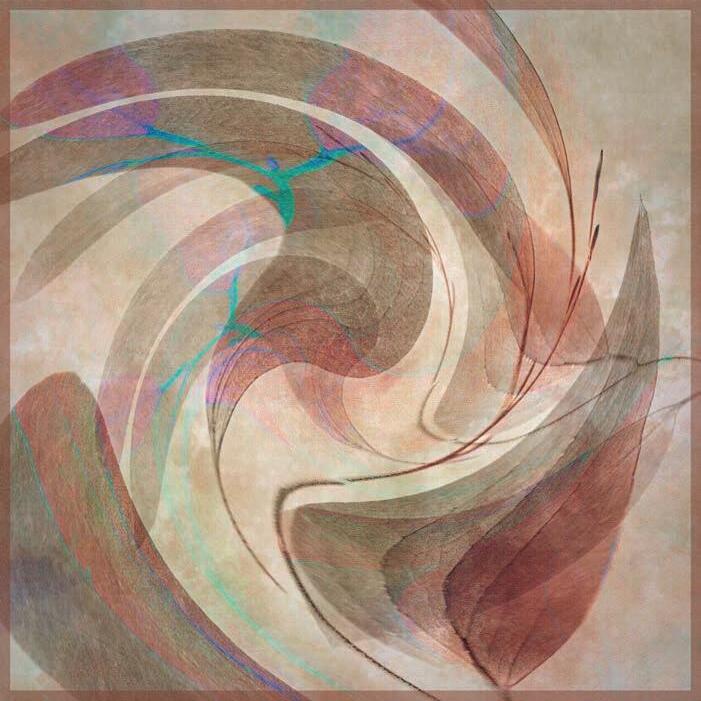

8 RPS Creative Eye Group Magazine: No 90 2023 Issue 1 JANIE CHAPMAN LRPS
Along the Strand Line
Fairy Dancers
Bailey, Glenys Garnett, Paul Kenny, Andy S Gray, Marianthi Lainas, EJ Lazenby and Polina Plotnikova, but I am also inspired by many earlier artists particularly the impressionists, post impressionists, cubists, and those on a more modern journey towards abstraction. But I haven’t quite reached post modernity yet.
Being a “creative photographer” involves many things to many people, but for me it’s about capturing and processing an image in a unique way that speaks to me on some emotional and personal level. The most successful of those images I then print on fine art matt paper, and this is when some more magic can happen.
So, for those of you travelling on this journey what I would say is to believe in your own creative potential; cultivate a curiosity and a desire to experiment with different approaches, techniques and challenges; a willingness to analyse what you do and not to be afraid to get it wrong – the only judge that really matters is YOU; and to learn to look at things in a different way, applying varying levels of observation and paying particular attention to detail.
Therefore, underpinning all of this is an ability to
embrace life-long learning opportunities and resources; to work with other photographers to learn, share and critique together; and to look at other artists and photographers down the ages to be inspired and to grow.
Do not underestimate the level of commitment that will be required of you but the challenge for me is certainly worth it.
More of my images can be seen at JanieChapmanPhotography.com. I hope that you enjoy them.
Janie’s image “Golden Trees” was awarded an RPS Gold Medal at the RPS Creative Eye Print Exhibition 2022. Details can be found in the Creative Eye Magazine Issue No 88 May 2022.

RPS Creative Eye Group Magazine: No 90 2023 Issue 1 9 JANIE CHAPMAN LRPS
Lily Pond
Making Creative Images
Dominique MacLellan
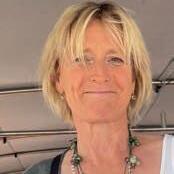 Spring Greens
Spring Greens
Whatis art? It's an interesting question isn’t it? Painting? Sculpture? Photography? I could go on but for me, art is creation. Creating. In whatever form it takes, whether making marks on paper with inks or paint, or blending photographs together to create something new and abstract. If it’s your vision and you made something new from nothing much at all, then that is art.
If anyone reading this has done mark making or collage with papers and paint then creating this sort of image is similar. It’s about layering to create depth but, in this case, it’s digital. We don’t have the physical papers and
paints we just have out basic images and our imaginations. And our sense of fun! And that’s important. I wish that I could effectively wield a paint brush but I cannot so this is my way of creating painterly images. Using multiple exposure (ME) and Intentional Camera movement (ICM).
What I have learned over time playing with multiple exposure images, is that you have to have patience and you have to be prepared to play and experiment. Try it this way and that. Lay images over one another and then change the kelvin. Change the exposure. When you look at your viewfinder and you see something you like, save
it and start again. Use what you’ve saved as a base and start again over the top. I often stand in the same spot for a very long time, and after some time I get something which has a future. So each image has its starting point in an in camera ME image which I then take in to PS and play with again. Another tip is I always like to have a straight image of my ME image, so that I can refer to it and I may use it in the final image too. Especially when shooting trees I find a straight image helpful.
For the ‘Spring Greens‘ my base was part of our tractor. Another similar image was laid on top in camera. Once in Photoshop, I played with

10 RPS Creative Eye Group Magazine: No 90 2023 Issue 1
colour balance and blend modes and brought in a new ME image of grasses and laid that on top. More playing, rotating, getting rid of some unwanted elements, and colour checking and then its something new. Abstract. And that’s what I like a lot of the time. It’s important to create art for ourselves, for what we like and what pleases us, before we think of pleasing others. For myself, I get a funny feeling in my stomach when something clicks and I know then, that I am onto something I will like - I‘m sure many readers will know that feeling.
Green Eyed Monster used a different tractor image, (the eye is some sort of bolt). I’ve layered it up with some ME images of the paving slabs in the garden and the lichen on those. Played with the colour. Played with blend modes. Rotated and tweaked until I was happy.

RPS Creative Eye Group Magazine: No 90 2023 Issue 1 11 DOMINIQUE MACLELLAN
Green Eyed Monster
For ‘September Blue’, The base was an in camera ME image of the tree reflection in one of our ponds. The grasses and weeds can be seen at the bottom. I have inverted the image and overlaid some dried seedheads on top. More changes to the colour balance and Blend modes and the image takes shape.

I read somewhere from a photographer that I admire, that art is theft, of a sort. We see art all around us every day and it seeps into our being and possibly without even noticing it we have a germ of an idea, stolen from nature, the greatest artist, or another artist, but still our own, and it morphs into something new which we then mould and shape into a piece peculiar to us, still, germinated from that unnoticed something from somewhere else.
‘Rapunzel’s Dream’ was based on one a part of our house, an arrow slit from an old byre, using multiple exposure I softened the look of the window. You'll see how painterly the colours become using this method? Colour balance changes and blend modes as always and then I have layered a double exposure of branches over the top. I like the tonal construct of this one and sometimes that’s all it takes. A Pleasing colour palette!

12 RPS Creative Eye Group Magazine: No 90 2023 Issue 1 DOMINIQUE MACLELLAN
Rapunzel’s Dream
September Blue
In Zanadu is an old favourite. I was just starting to learn the myriad ways of ME, and wandering on a walk with two dogs getting very impatient as I stood for hours messing with my camera. This is pretty much straight out of the camera. ME only. Nothing overlaid just some colour balance changes. You might see I have rotated my camera when shooting the hills.
I live in the countryside and that is where I make the main body of my work. I enjoy spending time in nature and I find the peace inspires my creativity. I can stand in the same spot for half an hour or an hour, taking muliple images, in mulitple ways. A straight shot always. The ME. Maybe some ICM. Maybe take a step to the right. Maybe try from a lower angle. Tilt the camera? Lie down? I’ll try anything and see what comes up on the back of the camera. And its then you know. That slight race of your heart tells you … ..oooh...I like that. I do play inside too. With flowers, jugs, bottles, shapes, whatever I can find. Really there is nothing that cannot become something using these techniques and that is what, for me, makes it so endlessly fun and full of possibility.
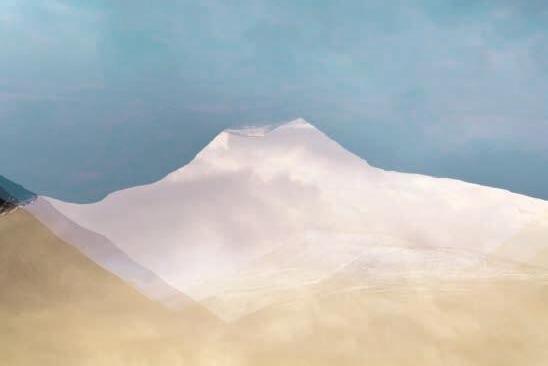
The final image, ‘Give Me your Answer Do’ was made using dried mud during a hot summer. Grasses laid on top and a shape on top of that. The bright simplicity of daisies to finish it off.

I find there is no end to what you can create with a little imagination with your camera and then the help of Photoshop to make the most of your chosen images. Now of course, there are plenty more apps which can be used to our advantage too. On your phone, on your computer, all just waiting to be found and played with. I am always shooting textures to use in my images, anything from rusted vehicles, bark, pavements, peeling paint, lettering in many forms, and these I might sometimes use at the end of an image to add some atmosphere. So what
I always do is find a few images which have a similar feel to them, whether that be the colour palette, or the subject matter or the general look of the piece, and then I just sit down and start to mess with it. Ask yourself what can I do to change this up? Add something? Remove something? Change the colour? Once you start you’ll find it hard to stop. And that is an art in itself!
RPS Creative Eye Group Magazine: No 90 2023 Issue 1 13 DOMINIQUE MACLELLAN
In Zanadu
Give Me your Answer Do
Photography: The search for creativity

Paul O'Flanagan LRPS

“In Order to be Creative” you have to know how to prepare to be Creative Twyla Tharp: The Creative Habit,
learn it and use it for Life.”There is no such thing as creative people and non-creative people. There are just people who use their creativity and people who don’t”. Brene Brown (author).
Creativity is seen as this nebulous, vague, somewhere in the mist idea. Who can catch mist? There are two problems here. The first is the definition of creativity which changes from one author to another, to suit the story that they are telling.
Creativity is defined as finding new ideas or possibilities, new techniques, or bringing something forth from your imagination. It is doing something in a different way.
The second problem is a lack of understanding of the words used. The words are create, creative and creativity. Create means to make something. Creative, as a description of someone means that they have used their imagination and applied this to the activity with which they are involved. Creativity is the result of that application. The pure act of making / creating something is not necessarily creative. By this I mean that if it is a technical exercise, it is not creative. To be creative there must be the use of imagination or personal expression.
Currently there are thought to be four different levels of creativity

14 RPS Creative Eye Group Magazine: No 90 2023 Issue 1
I find the technique of Multiple Exposure gives great depth. You seem to be looking through multiple layers. This is an example of playing with shapes to see what I can achieve
This is an example of brain training, of always being on the lookout for photographs. It is a straight photograph of a strip of red on a building with its reflection.
called the Four C Model of creativity described by researchers James Kaufman and Ronald Beghetto. These are 1. Mini-c, 2. Little-c, 3. Proc, and 4. Big-C.
Mini-c occurs in any learning process. Such a person may discover something that is new to them but is well known to their teacher or others.
Little-c refers to everyday activity. It is not uncommon for each of us to do something in a different way. A simple example would be making a meal using whatever is at hand in the kitchen. Another example would be planning a new route to work. A further example would be using a map to plan a walk. My favourite example is that of a person decorating their house. They must make decisions on the colour scheme, which could involve paint colours, carpets, curtains and so on.
Little ‘c’ is the level at which most of us will create our photographs. Most of us don’t work at the professional or the cutting-edge level. Calling it Little ‘c’ is not to belittle what we all do, but to be inclusive of those who are creative and not at the professional level.
Pro-c is expertise at a professional level. Such a person could be an architect or an artist, or writer. It is a step above the everyday to a higher level of expertise.

Big-C is at the rocket science level. Big ’C’ involves discoveries that very few of us will make. Such a person goes to the edge of what is known and then takes one more step. Clearly in photography there is little chance of me, and maybe you, making a major discovery. But within
the limits of what we do we are creative. I think that this idea of Big ’C’ is the perception that most people have of creativity and might explain why most don’t see themselves as creative.

RPS Creative Eye Group Magazine: No 90 2023 Issue 1 15 PAUL O'FLANAGAN LRPS
This was taken at Park Hill, Sheffield. This is again a ME photograph. It is a good example of ‘What If……….’ As until I add the different layers the exact result isn’t known.
An Another example of playing. Its title is ‘Relaxing’ whichis appropriate as it is the side of an hotel. I think it is also a child-like image with various elements laid down in an unconstructed way. I am trying to think of any artistic influence. If there is one, it would have to be John Hoyland who liked to add lines, usually verticals, on the edges of his paintings.
The title here is ‘A Twist of Red’. Maybe John Hoyland’s influence again. One of the points that I wish to make with these images is a sense of play, of having fun. Of facing up to the challenge of making an image from improbable beginnings by solving the problems that allow me to make an image. See the last two images where this point is more clearly made.
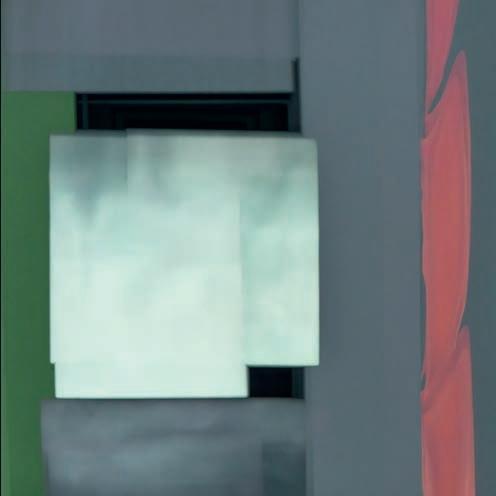
There is a further point to be made, I feel that you must separate good technique from creativity. Many times, I have heard the remark, ‘that is a good photograph’ and maybe so. But ask yourself if it is just good technique or is it creative? There is a difference. Our aim should be to make the journey beyond the technical and into the space of our imagination. The importance of creativity in photography is that it separates the considered photographer from the snapper. It is central to Personal Expression. It takes an image beyond pure documentation.
My definition of the act of photography is: ‘Photography is the communication of Personal Expression and Intent through Craft and Artistry in a Photograph’. This article doesn’t discuss Craft beyond saying that there can be no Artistry without Craft. In other words, if you don’t have the right skills, you can’t express anything. The skills you need are those required for your style of photography, not all genres of photography.
To avoid writing a treatise on creativity, with the different ideas that have been put forward to explain creativity, the purpose of this article is to keep to the idea that creativity is grounded in the everyday and therefore available to all photographers. For those who wish to delve deeper please see the reference section, ‘The Creative Notebook’ on my website at pauloflanagan.com.
Let us now go back to childhood, to our beginnings.Picasso made a very astute remark when he said “Every child is an artist. The problem is how to remain an artist once we grow up.” What are the characteristics of the child artist? They play, they don’t fear failure or ridicule, they don’t try to please anyone, they don’t look for approval. Basically, they don’t care what they do, they have no rules.
The child also has a naivete of view, an ability to perceive with no limitations. As we grow older, we lose these traits, we start to worry about failing, how our work will appear to others, we want to meet expectations and so we start to play safe. We need to go back to the attitude of the child.
Learning creativity is not the same as learning, say, 2 + 2= 4. In creativity you are aiming to change the way

16 RPS Creative Eye Group Magazine: No 90 2023 Issue 1 PAUL O'FLANAGAN LRPS
Another image from Sheffield and an example of brain training otherwise known as keeping your eyes open! It is a straight image of a walkway between two buildings. It is creative in the seeing and composition.
that you think. This is the core, the centre, of learning creativity. The best way of changing how you think is to ask the most important question in creativity ‘What if………?’.

By doing this you are challenging yourself to find new ideas, new approaches, a different way of doing things. This can be applied to not only photography but in all that you do. This will take you out of your comfort zone and encourage you to look at things differently. Part of changing how you think is to change your perception of yourself, the way that you think about yourself. Most people of whom I have asked the question, “do you see yourself as creative?” have replied “no”. The above discussion of the nature of creativity has hopefully changed this perception.
Having changed your perception of yourself think about how you feed your brain! Todd Henry, in the Accidental Creative, says that you are what you take in, foodwise, health wise and Mindwise. I had never considered mental ‘food’ until I happened to read this. Your mental diet should include the following: Life Experience and Visual Knowledge.
Life experience. Photographer Jay Maisel, says, “if you want to make more interesting pictures, become a more interesting person.” When I first read this, I didn’t understand what he was saying. But then I reflected upon the life of Ernest Hemingway. He had a very boisterous adventurous life. He worked in various parts of the world which gave him material for his novels.He was also lucky enough to meet Pablo Picasso, Joan Miro, Ezra Pound and other well-known
Even though I suggest various influences in my work I am not conscious of them whilst making an image. It is only in retrospect that I can suggest possibilities. It is possible that I may have a mental library of artwork that I have seen. However, I can’t claim any such reference here!

painters and writers. He was a person who accumulated Life Experience. His Life Experience added to his creativity. Whilst our lives will not be as intense as his, in our own way, we can add to our Life Experiences.This can be done through travel, reading, music, watching sport, going to workshops or talking to other photographers, going to concerts, or watching films. It is best if you include something that challenges you which could range from learning a new language to maybe something less extreme such as writing or solving a crossword puzzle.he point being to open your mind to new experiences which in turn will change how you think.
Visual Knowledge. This is a more obvious aspect of feeding your mind. This will come from looking at art, photographs, exhibitions, going to workshops or any other place that you use to find good art or photography. This kind of experience will challenge the mental picture that you would normally carry in your mind as a visual reference. The new knowledge that you
RPS Creative Eye Group Magazine: No 90 2023 Issue 1 17 PAUL O'FLANAGAN LRPS
The structure here reminds me of an Adobe, a building made of clay. In turn it reminds me of the work of Georgia O’Keefe.
I have taken the liberty of showing the RAW file of the window as seen and the finished image, which is a multiple exposure. You can identify the different elements in the final image. I includeboth to make the point that creativity takes one beyond pure documentation to the nextlevel. It is the end point in my search for creativity.
gain can feed into your photography with the result that when you are out taking photographs it will change your thinking. After feeding your mind you need to introduce exercise. This is done by learning good visual habits. This is brain training! Anders Ericsson, who co-wrote ‘Peak’ with Robert Pool, discusses deliberate practice, by this he means that you
practice the right skills relating to that which you wish to achieve. The best exercise is to practice visual seeing.
exercise in visual seeing. This form of practice can be built into a habit. If you are out-and-about, anywhere, keep looking for photographic possibilities, you don’t need a camera to do this. This will create the habit of visual seeing. Such a habit becomes a shortcut to finding photographs.
This repetition of seeing physically alters your brain to make it easier to find photographs. This is called Neuroplasticity. Your brain physically changes to make it easier for you to perceive the possibility of a photograph.

A final idea is to challenge all the work that you have put into learning about creativity by using the five-word challenge.
I found this in a book by Brooke Shaden entitled Inspiration in Photography. You write down five words that describe where you are now in terms of your photography. You then write down five words to describe where you would like to be. The two lists will probably be quite different. In your future photography you try to align your photographs with the second list of words.
You should aim to avoid any photographs that are not described by your second list. This then can become a powerful driver of your creativity.

I gave myself the challenge, one holiday, to walk down an ordinary street and take 15 photographs. They were not meant to be competition standard but an
All the suggestions above are intended to give you ideas on how you can change your thinking about yourself, how you can approach and search for creativity.

18 RPS Creative Eye Group Magazine: No 90 2023 Issue 1 PAUL O'FLANAGAN LRPS
I like a degree of simplicity in my work (not withstanding the final photo !). This image also includes a degree of story telling, see the cat. Any influence here would have to be Joan Miro.
Creative Eye Group Members’ Digital Exhibition 2022
Abstract Structure
 Rob Kershaw ARPS
Rob Kershaw ARPS
Nothing is out of place. It is an image that had immediate impact for me and held my attention, and it still does now.
Rob Kershaw ARPS:
Athena Carey, MFA, ARPS: This photo draws the viewer in immediately with strong angles, shapes, and contrasts. What then makes it so successful is that the complexity within the image holds our attention, moving us across the frame from one fascinating aspect to the next. Each element seems vaguely familiar but also somehow foreign. The mind works to make rational sense of perspective “am I looking up, down, or across?” as well as subject “is that a window or a wall”. There is so much to see, to resolve, and to discover in this photograph. Each question answered leads to a next in the journey through this delightfully creative image.
Viveca Koh FRPS FIPF: This highly creative image not only challenges the perception of the viewer through illusion, transparency, and layering, but for me evokes a dream-like quality
which is both strangely emotional and oddly mesmerising. The structure is curious, abstract, and contradictory – there is the sense of optical illusion, discombobulation, strange and improbable connections; and it looks solid and heavy yet appears to float in the air amongst the clouds. The limited colour palette enhances the overall impression without detracting from the visual impact, and subtle textures create a level of delicate detail which contrast with the large and weighty elements. An imaginative, fascinating, and clever image.
Simon Leach FRPS: For me, photography is about the equality of the idea and the execution and this image achieves that. I find myself placed in a dystopian, claustrophobic place, but with that window of light drawing me in. The creative vision for the image that Rob had is clear. The placement and balance of each of the various elements of the composition, the tonal range and limited colour palette have all been considered to add to the voice of the final work.
Abstract Structure is a double exposure of the Government building in Hong Kong and, like many modern Chinese buildings, has a bridge structure with a “hole” in it joining two towers. Shooting from directly below and looking for different positions and angles I produced a double exposure colour image in camera. A monochrome version was then given a duo tone look and some differential sharpness to add a more abstract and mysterious feel to the shot.
In camera multiple exposures have a bit more serendipity than controlled post processed composites and provide a different creative outlet. In addition, it’s worth looking up whilst out and about as many interesting features can be found skyward.
GOLD MEDAL
RPS Creative Eye Group Magazine: No 90 2023 Issue 1 19
Creative Eye Group Members’ Digital Exhibition 2022 Five Dining
Rachel Domleo CPAGB EFIAP
Athena Carey, MFA, ARPS: I chose this photograph as my favourite because it strikes a strong balance between the surreal and the familiar. It is simultaneously able to both intrigue and comfort me. We are often drawn to the surreal as a form of escapism. It is something safe but enough outside our own norm to spark curiosity and fantasy. We are drawn to what is quotidian for its reassuringly comfortable normalness. In this photograph, we have a casual café scene (familiar)
that has been diffused to the point of obscuring all specific identity and paired with a bold number five (surreal). Though seemingly unassuming and subtle, this photograph successfully blends two distinctly opposite visual styles, creating a very dynamic and enjoyable experience.
Rachel Domleo CPAGB EFIAP: The thing I enjoy most about photography is looking for the extraordinary in the ordinary.
I rarely plan a photo shoot but always have some form of camera with me to ensure that I can capture that unexpected moment. I spotted this scene in the Tate Modern and took a number of shots as people moved behind the frosted glass. I used two of the images to create the final image and converted it to mono. I was attracted by the minimalist / graphic look that the frosted glass gave this simple scene removing distractions yet ensuring the narrative was retained.

20 RPS Creative Eye Group Magazine: No 90 2023 Issue 1
THE ATHENA CAREY SELECTOR'S AWARD
Creative Eye Group Members’ Digital Exhibition 2022
Grass
Nicky Love LRPS
Simon Leach FRPS: I find myself drawn into this image. It has an ethereal, trance-like quality that I find both captivating and peaceful. Like a memory of some distant time with no concerns. It is an idea that Nicky has generated for the viewer through the elements of light and of focus, creating, it seems, both movement and stillness in one. Others may interpret something
different, possibly something malevolent in the shadows, but for me this is a wonderful image, a clear vision of quiet moments and of daydreaming. Somewhere to lose myself.
Nicky Love LRPS: I chose a simple title, because that is what the image is. It’s just grass. But it’s also magical and dreamy. I wanted to convey just
how magical something so ordinary can be. That nature holds so many secrets and untold beauty, we just need to look to see it. The recipe was simple; my lawn, my macro lens, and lying on the grass soaking up the summer rays. It is amazing how much beauty we can find in the simple things in life when we take the time to slow down and look for them.

RPS Creative Eye Group Magazine: No 90 2023 Issue 1 21
THE SIMON LEACH SELECTOR'S AWARD
Creative Eye Group Members’ Digital Exhibition 2022 Untitled C
Audrey Tan ARPS
Viveca Koh FRPS FIPF: An intimate image, looking down on the woman to create a unique and very personal viewpoint. There is a powerful sense of a fleeting moment captured, seen in the motion blur and soft focus, but also a terrific feeling of energy and movement despite this appearing, initially, to be a very ‘quiet’ image. Minute details gradually become apparent: the eyelashes on the cheek, the delicate softness of the hair, the creased

texture of the white fabric, all of which are light and ethereal. These contrast perfectly with the strong black garment, which could be perceived as overpowering but somehow is not - instead, it reflects the dark shadow in the hair, and creates a fascinating idea of duality.
Audrey Tan ARPS: I chose this image for submission as there was something about it - the contrast in colours between the black and white
coloured tops and skin tone and, blur, the angle of the view looking down, what was she looking at or doing? Hence the title, “Untitled C.”. When looking at this image, I do wonder whether the image would have worked without the black colour. What led me to ask C. to be the model was her enigmatic face. This image was taken in a studio with studio lighting but without the use of the flash, in a spontaneous moment.
22 RPS Creative Eye Group Magazine: No 90 2023 Issue 1 THE VIVECA KOH SELECTOR'S AWARD
Marie-Ange Bouchard ARPS, CPAGB: I didn’t plan this image, it just presented itself. I was admiring the sunset on a beach where some artefacts from an exhibition had been left behind by the artists and I was pondering on how incongruous the phone box was. The “Closed” sign in such an open and bare space added to the intrigue. I was deciding on my composition when I spotted the angel who was part of a film or fashion shoot further down the beach. A story unfurled in my minda lost angel trying to contact Heaven where she belonged and walking away from the phone booth as it is closed. A surprising discovery in a surreal setting, pure serendipity.

Marilyn Taylor FRPS FIPF: This image was conceived after I had been looking for some portraits in my archives for a competition. This photo of a young lady was taken at a shoot at her hairdressers and her lashes were gorgeous. Shortly afterwards she was putting together a panel of shells for a challenge, and it was obvious the Venus comb and the portrait belonged together. In the past I have taken photos of eyes looking out of a letter box, but her iPhone box was just sitting there waiting to be used. It was a simple shoot – with natural light and the camera on a tripod. I experimented with a few changes in the height and position of the tripod so that the box logo was visible. The first attempt with the white shell against the antique white mount board wasn’t so successful; it was too similar in colour. So the mount board was changed to black, the shot taken again, and the mount and shell were inverted in Photoshop so that it was a black shell on white.

RPS Creative Eye Group Magazine: No 90 2023 Issue 2 23 HIGHLY COMMENDED
Can't Reach Heaven by Marie-Ange Bouchard ARPS, CPAGB (Highly Commented)
iLashes by Marilyn Taylor FRPS FIPF (Highly Commented)
Focus stacking was used on the shell with an Olympus E_M1 III so as to get as much in focus as possible, because the shell is about 4cm deep.
Curve by Jan Beesley ARPS: This image was created from a visit to the Sound Mirrors and Denge in Kent. These huge concrete “listening ears”


were built during in the 1930’s to capture the sounds of any enemies approaching across the English Channel. They are megalithic monu-
ments to human ingenuity which were sadly never used due to the subsequent development of radar technology. Yet these structures still stand as proud and intriguing as the pyramids at Luxor, gradually crumbling and being reclaimed by weather and nature.
I was drawn by the sheer scale and strangeness of the Mirrors and their beautiful geometry. I was intrigued by the idea of them still mutely listening with no purpose. My aim was to represent the shapes and the other worldliness of this place. I used multiple exposure to bring together these components and add a degree of abstraction and mystery.
Steve Granger LRPS, BPE2: Wherever I go, I have a camera with me. When I made this image I was
‘travelling light’ with a Canon G16 that fits easily in my pocket. The image was made on one of the
ridiculously hot days of summer 2022, on a trip to London. Photography makes me slow down and look at what is around me. At first it was easy to ignore these steps. The white stone, on a baking day in harsh light, did not look promising. But I loved the shapes and the subtle tones of the manmade structure in combination with the natural form of the dried fallen leaf. The juxtaposition created a focal point for the image.
24 RPS Creative Eye Group Magazine: No 90 2023 Issue 1 HIGHLY COMMENDED / COMMENDED
Curve by Jan Beesley ARPS (Highly Commended)
Leaf by Steve Granger LRPS, BPE2 (Commended)
Roger Dixey ARPS DPAGB: The house on the hill’ is a landscape I created from several images which were photographed with the final
image in mind and blended together in Photoshop. Most of the images were taken on a mobile phone. I used a texture overlay
which helped to add some mood to the sky and also enhanced the apparent sharpness I am currently working on ideas to create a panel of similar images.
Robert Farrow CPAGB : I love photographing wildlife and in particular insects. Butterflies make attractive subjects and when photographing them you are regularly photographing flowers as well. I wanted to combine both in my image but not in a straight record sort of way.
This image is part of a triptych which won the annual triptych competition at my local camera club. It is a composite. The background is a cork floor tile, the butterfly, flowerheads and grasses were all photographed separately and then combined in Photoshop.


I have tried to convey the beauty of insects and flowers in an impressionistic way as opposed to a normal sharp and very detailed image.
I think it has a painterly feel and the subdued tones make it reminiscent of a Victorian diorama.
RPS Creative Eye Group Magazine: No 90 2023 Issue 1 25 COMMENDED
The House On The Hill by Roger Dixey ARPS DPAGB (Commended )
Flowers and Butterfly by Robert Farrow CPAGB (Commended )






26 RPS Creative Eye Group Magazine: No 90 2023 Issue 1 OTHER ACCEPTED IMAGES
Light, Shapes and Shadows by Suzanne Allen LRPS
Alium Seedheads by Mary Auckland ARPS
Dusty Old Bottles by Hilary Bailey LRPS, CPAGB
Bokeh Explosion by Dave Balcombe ARPS, EFIAP
Tulip by Paul Bather ARPS, AFIAP
Gannet at Bempton by David Baxter LRPS

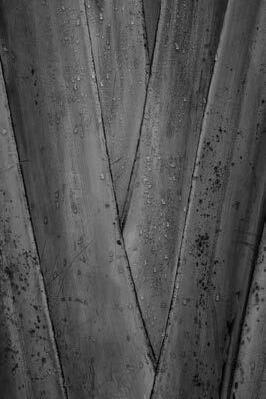



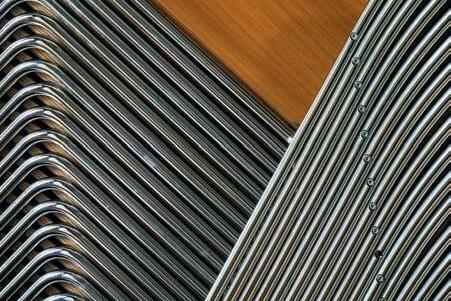
RPS Creative Eye Group Magazine: No 90 2023 Issue 1 27 OTHER ACCEPTED IMAGES
Normandie Coast by Iain Blacklaw
Trunk Lines by Peter Boazman
Odds by Pat Brennan LRPS, AFIAP
Perpetual Motion by Astrid Breuer
Trees In Motion by Sue Brame
Chair Stack by John Bull CPAGB, LRPS






28 RPS Creative Eye Group Magazine: No 90 2023 Issue 1 OTHER ACCEPTED IMAGES
Tal-y-lin Church by Mick Cant
Inquisitors by Reg Clark LRPS, BPE2
Guitar Music by José Closs
Dawn, River Yamuna-2 by Derek Collis LRPS, CPAGB
Goblets by Alistair Cowan
Tulipa Libretto Trio by Julie Cowdy CPAGB, ARPS
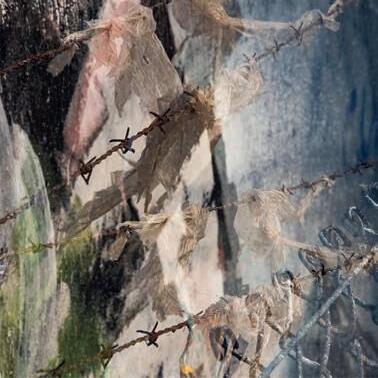
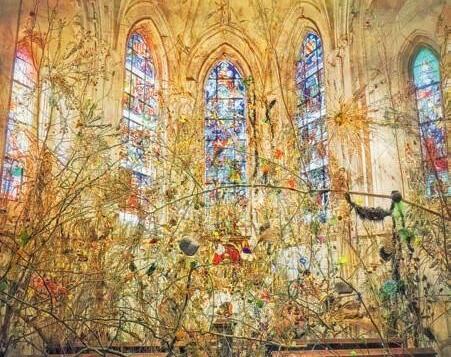




RPS Creative Eye Group Magazine: No 90 2023 Issue 1 29 OTHER ACCEPTED IMAGES
No Right of Way by Alexander Cowie ARPS
Chaumont Chapel by Steve Culverhouse
Artist and Graffiti by Derek Dewey-Leader LRPS
Catching Time by Ray Duffill
Mellow Green by Susan Edwards
Exhibition by Dain Evans LRPS




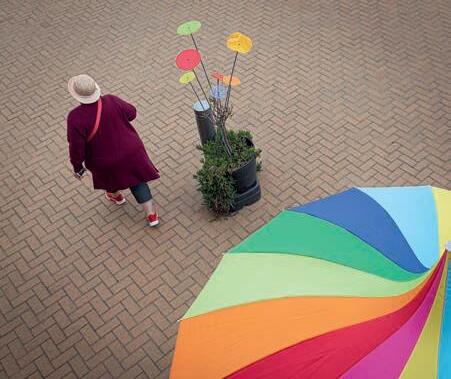

30 RPS Creative Eye Group Magazine: No 90 2023 Issue 1 OTHER ACCEPTED IMAGES
Keeping in the Shade by Tim Evans LRPS
Stepping Out On A Gray Day by Mike Farrance
Inside the Outside by Brian Fleming LRPS, DPAGB
Faces of the Past and Present by Angela Ford ARPS, EFIAP/p
Colour Coordinated by Roger Ford FRPS, EFIAP/p
Pebbles by Ian Foster LRPS
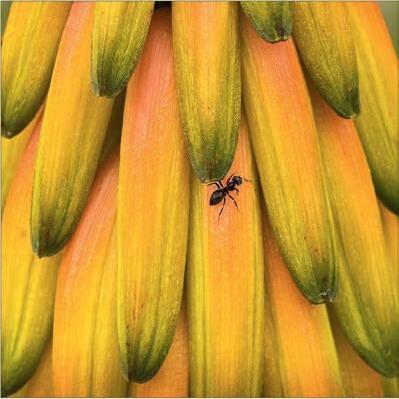





RPS Creative Eye Group Magazine: No 90 2023 Issue 1 31 OTHER ACCEPTED IMAGES
Ant on Bananas by Barry Freeman ARPS, DPAGB
Tree Lacework by Palli Gajree Hon.FRPS, Hon.EFIAP
A Pint of Bass by Robin Garrod
One has Fallen by Linda Gates LRPS, CPAGB
Guard Dog by Steve Geer FRPS
The Dream by Lynda Golightly LRPS






32 RPS Creative Eye Group Magazine: No 90 2023 Issue 1 OTHER ACCEPTED IMAGES
Summer's Colour by Harman Hopkins LRPS
Sunlight on the Water by Jan Harris ARPS
Abstracted Flower by Sarah Healy LRPS
Lilies by George Heath LRPS
Through the Window by Elaine Herbert ARPS
Venice in Flow by Mike Hill LRPS


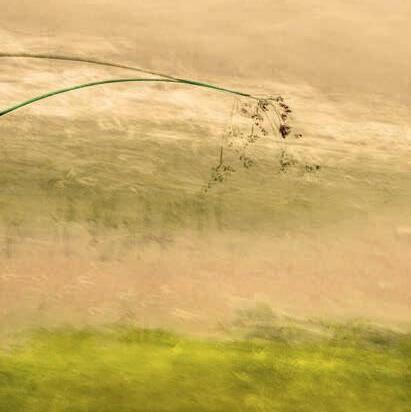



RPS Creative Eye Group Magazine: No 90 2023 Issue 1 33 OTHER ACCEPTED IMAGES
Pinwheels by Nicol Hockett
Multiplication by Julie Holbeche-Maund ARPS, CPAGB
Presence by Annemarie Hoogwoud
Lightspeed by Barrie Howarth LRPS
Shopping Centre Dreamscape by Carol Hudson LRPS
Homage to Rothko by Valerie Huggins
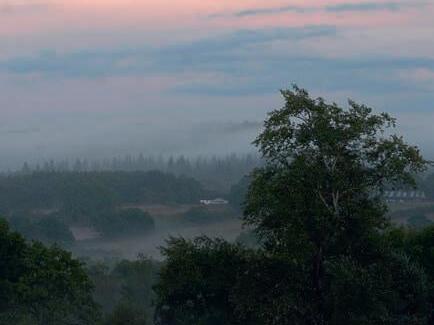
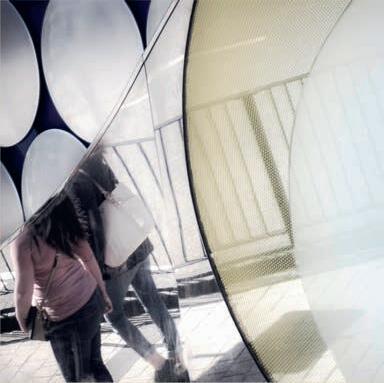



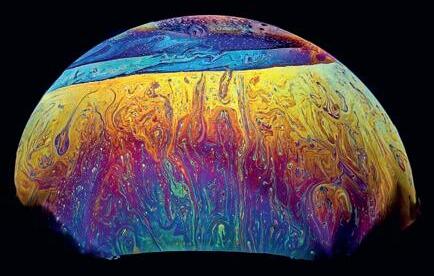
34 RPS Creative Eye Group Magazine: No 90 2023 Issue 1 OTHER ACCEPTED IMAGES
Evening Mist by John Jennings ARPS, BPE3
Walk On By by Joan Jordan ARPS
New Growth by David Jordan FRPS
Abstraction No. 2 by Pat Kelleher
There's Three In This Marriage by John Kelly
Below the Surface by David Kors






RPS Creative Eye Group Magazine: No 90 2023 Issue 1 35 OTHER ACCEPTED IMAGES
The Principal Dancers By John Lacey EFIAP-B ARPS
Wrapped by Pavllou Landraagon Kokko LRPS
Midwinter Walk by Andrew Legge LRPS
Canning Dock by Trevor Litherland
It's a Topsy Turvy World by Stephen Lloyd LRPS, DPAGB
Budding Abstraction by Antony Long
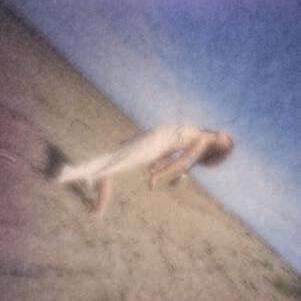





36 RPS Creative Eye Group Magazine: No 90 2023 Issue 1 OTHER ACCEPTED IMAGES
On the Beach by Richard Luxton ARPS, cMoL
Watching the Kiteflyer by Peter Merrick DPAGB, FRPS
Against a Blank Canvas by Allisdhair McNaull
Wollaton Hall by Mervyn Mitchell ARPS
Acer by Angela Morgan ARPS
Deckchairs by Janina Nash LRPS, AFIAP



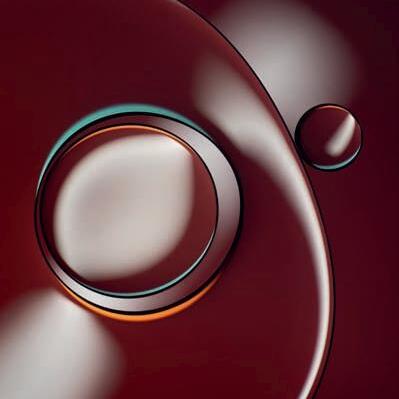


RPS Creative Eye Group Magazine: No 90 2023 Issue 1 37 OTHER ACCEPTED IMAGES
Serenity Personified by Carolyn Newton LRPS
Elements by Paul O'Flanagan BPE3, EFIAP
Last Rose of Summer by Jeremy O'Keeffe ARPS
Light & Dark 56C (Oil and Water) by Martin Parratt FRPS
Calla Lily in Motion by Janice Payne ARPS
The Sun Plays by Evelyne Peten





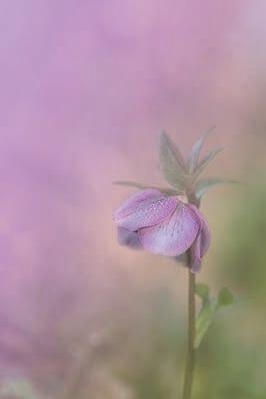
38 RPS Creative Eye Group Magazine: No 90 2023 Issue 1 OTHER ACCEPTED IMAGES
Shopping Centre (Cruise Liner) by Mick Pleszkan
Digital Waves by Colin Prickett ARPS
Dutch Field by Brian Priestley
Envy by Howard Rankin
Chaotica by Margaret Rainey FRPS
After the Rain by Jacki Rosin ARPS
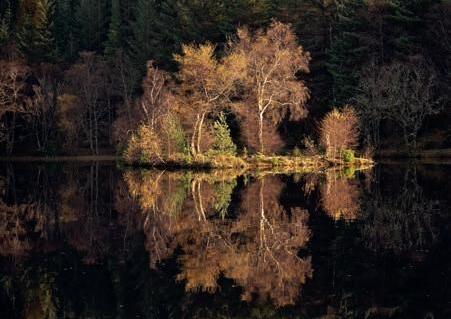




 Ross 116 Golden Islet by Tracy Ross Ross 116 Golden
Ross 116 Golden Islet by Tracy Ross Ross 116 Golden
RPS Creative Eye Group Magazine: No 90 2023 Issue 1 39 OTHER ACCEPTED IMAGES
Islet by Tracy Ross CMYK
Golden Islet by Tracy Ross
Tuscan Spring by Barry Rourke
The Smiling Alien by David Ryland ARPS
Three Chairs by Katherine Rynor ARPS
Whisper by Jayne Sanderson
Croc and Book by Keith Sawyer






40 RPS Creative Eye Group Magazine: No 90 2023 Issue 1 OTHER ACCEPTED IMAGES
Pinch
Point by Andrew Smith LRPS, CPAGB
Festive Fun by Colin Southgate FRPS, DPAGB
Polytunnels by Cliff Spooner ARPS, CPAGB
Juvenile Herring Gull by Tony Spooner ARPS
Reflections by John Stewart Blue by Eileen Sutherland CPAGB, LRPS
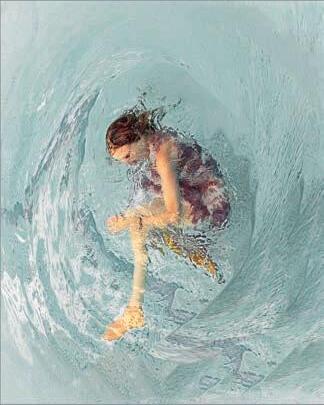
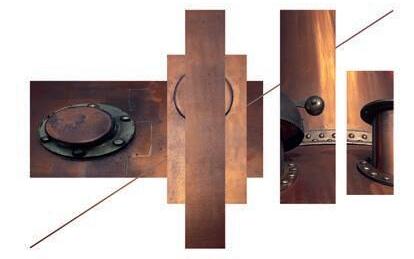



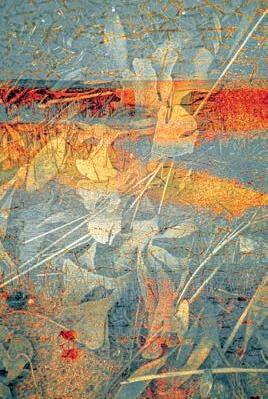
RPS Creative Eye Group Magazine: No 90 2023 Issue 1 41 OTHER ACCEPTED IMAGES
Through the Vortex by Kay-Elvina Sutton
Copper Still by Brian Swinyard
To Infinity and Beyond by Eng Loy Tan ARPS
Winterbourne by Peter Tilley
Electric Blue by Brian Titchiner
Strandline by David Townshend FRPS






42 RPS Creative Eye Group Magazine: No 90 2023 Issue 1 OTHER ACCEPTED IMAGES
Night Lighting by Claude Trew LRPS
Across the Manx hills by Patricia Tutt ARPS, CPAGB
A Trio of Cosmos by Carol Walker
Spy Reflected by Dan Waller LRPS
Reclining Figure by Paul Waller ARPS
Orion Rising by Clive Watkins LRPS


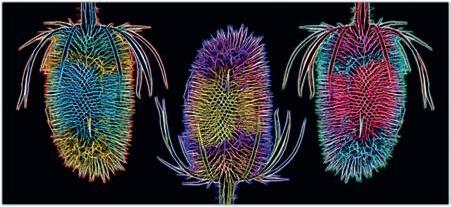



RPS Creative Eye Group Magazine: No 90 2023 Issue 1 43 OTHER ACCEPTED IMAGES
Two for One #1 by Paul Wells
Circles by Sue White
TripTeazel by Peter Whitfield
Strand, on a strand, after Strand by Steven Whittaker ARPS
Shed Art by Veronica Worrall ARPS
Pot of Lilies by G Zimmermann LRPS
Abandon Hope
by David Townshend FRPS
David Townshend won first prize in the Abstract Views category of the latest International Garden Photographer of the Year Competition 16 with his image ‘Abandon Hope’. He explains how he created this image.
The arrival of Covid was a scary time, and being confined to one’s home was a unique experience for most of us. Photographically though, this was also an opportunity grasped by many. Creativity thrives on boundaries, and I set myself the challenge of photographing my small garden in as many different ways as possible.
Since 2016 I have been exploring impressionist photography, particularly through the use of incamera multiple exposures. For multiple exposure photography, strong shapes are a great help, and Allium seedheads and a bug hotel were the inspiration for this image. It was created on a cloudy day in March – strong sunshine would have cast harsh lines, confusing the image. It was composed in the garden and then completed using Lightroom.
I used a Canon 5D Mark III camera with a Canon 100mm macro lens. Canon bodies have the best incamera multiple exposure software for impressionist photography, with a wide range of settings. One option
is whether to save all layers within a multiple exposure image or just the final composite. I always do the latter – this means the image has to be composed in the moment, often capturing a sense of place. However, it also means that I often have no record of how an image was constructed! Nevertheless, I think I can explain this image, especially having recently tried to replicate it in my garden.
I believe the final image is made up of three layers - firstly one of Allium seedheads, then two of the bug hotel, each with a different orientation.
My Canon 5D Mark III offers four multiple exposure blending modes. The first two images were taken in Dark mode, in which the dark pixels override the light ones – hence the dark bug hotel holes dominate. The combined image was saved, and then used as the starting image to add a second bug hotel this time in Bright mode. Composing such an image is all about exploring how to combine layers, and serendipity often plays a part.
Taking the composite RAW image into Lightroom, I chose a preset that substantially adjusted a number of variables. In particular it applied a pronounced tone curve and the white balance slider was hard to the right. The colour channels were adjusted too, with hue, saturation and/or luminance sometimes increased or decreased by 100%. The viewer’s eye was targeted at the focal point of the image with a vignette, which also darkened the mood of the image further. Multiple exposure images can stand this extreme type of adjustment as you are not depicting reality.
And the title ‘Abandon hope’? The dark, threatening tones and the circles within circles led me to the nine circles of hell in Dante’s Inferno, and in particular the famous inscription on the gates of hell: ‘Abandon hope, all ye who enter here’. So, as well as winning first prize for my abstract creation I also expanded my knowledge of Italian classical literature!
44 RPS Creative Eye Group Magazine: No 90 2023 Issue 1 HOW IT WAS CREATED
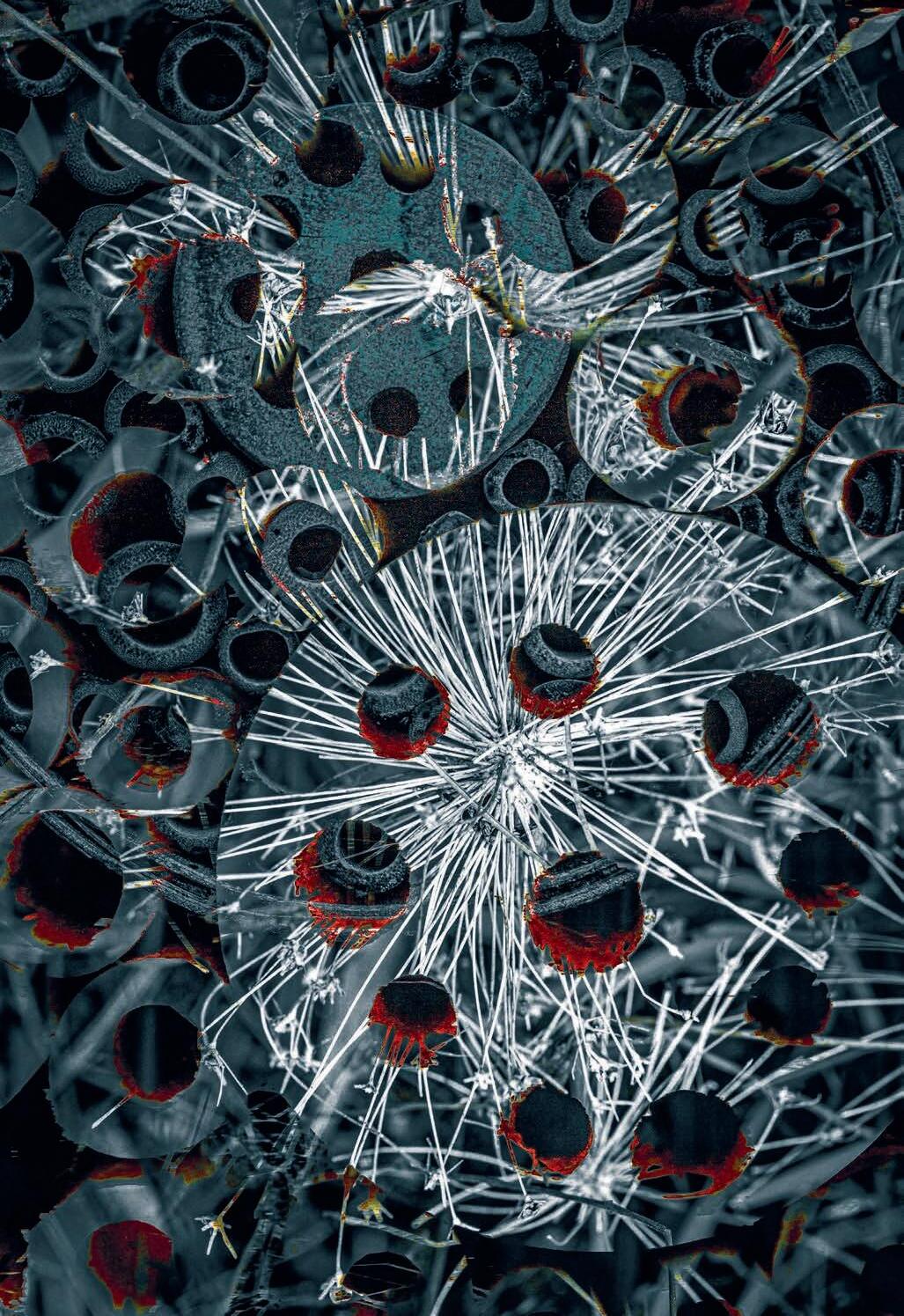
RPS Creative Eye Group Magazine: No 90 2023 Issue 1 45 HOW IT WAS CREATED
Abandon Hope
Group Activities
intend to have a 2023 Digital Exhibition, with David Rutter once again organising the event for us.
PHOTO WALKS

Following the pandemic, we feel there is a pent-up demand in our membership to reconnect with each other away from the computer screen.
PHOTO FORUM
Clive Watkins ran an hour-long photo forum after the AGM. Eighteen brave members submitted one photograph each for discussion at the forum. Thank you to everyone who took part. Clive trialled a method of discussion which involved the photographer talking about their work before handing over to the next person for them to add their thoughts. The feedback from the event was that it went very well and comments for improvement were very constructive. Clive thinks it is something he will do again, so do look out for news of that.
EXHIBITIONS
We are sorry to report that we will not have a print exhibition this year. Moira Ellice and her team put in a
massive amount of effort last year for what was a fantastic, coherent, and professional exhibition. Although Moira is now having a wellearned rest, displays of the 2022 Print Exhibition are still being organised. Your new committee will discuss how we proceed with print exhibitions in the future but staging another one will depend on us securing the necessary volunteer support.
Organised by volunteer, David Baxter, a selection of 40 prints from the 2022 exhibition will be going on display at Stamford Hospital, Lincolnshire. Many studies have shown that visual art provides positive healing power to hospital patients, and we hope patients, staff and visitors will enjoy the prints. Following on from last year, we
We are on the lookout for keen members to volunteer to run photowalks. We have members all over the UK and the rest of the world! We would like to make a direct request to anyone who would like to volunteer to run a photo-walk in your region to contact Clive with your idea. We will help with the publicity to ensure that members in your region are made aware of the event. We will also advise on the logistics of organising your walk to make the whole process as simple as possible. So, please get your thinking caps on and contact Clive at creativecomms@rps.org with your ideas.
ONLINE TALKS
Jan Harris is lining up a stellar series of talks for us this year. These talks are one of the main benefits of your membership of the Creative Eye Group, so please take advantage of the education, entertainment, and enjoyment they bring.
FACEBOOK
Our Facebook group is administered by Margaret Rainey. With 290 members it is very active and is a great place to share your images for comment, as well as exchanging ideas and finding out what is going on in the Group.
46 RPS Creative Eye Group Magazine: No 90 2023 Issue 1 GROUP ACTIVITIES
Balcony Chair by Nigel Rea ARPS
FLICKR GROUP
Recently, Clive Watkins has taken over the management of the Flickr group and, currently, he is evaluating how best utilise it for the Creative Eye as we move forward. More news on this over the next few months.
PORTFOLIO GROUP

David Harris continues to run a friendly forum for members to exchange images for peer review. Additionally, David holds Zoom sessions to meet with group members to discuss their images.
GROUP WEBSITE
Steve Varman continues to run the Group’s website with great success. The site contains a wealth of information about the Group including news items, events, the print and digital exhibitions, the members’ day, documents, and details of members’ websites. We recommend this site to all those who wish to know more about the Group and its activities.
WORKING WITH REGIONS
We will be working with the regions where possible and appropriate to take part in each other’s events. Once again, if you are aware of events in your region that may appeal to members, please contact Clive to let him know and we’ll do our best to work together.
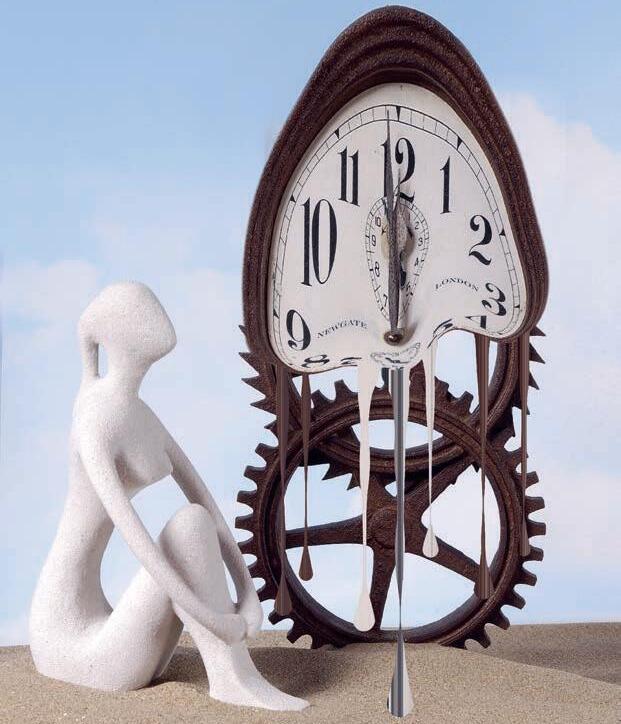
RPS Creative Eye Group Magazine: No 90 2023 Issue 1 47 GROUP ACTIVITIES
Too late by Gwynn Robinson FRPS
The Smiling Alien by David Ryland ARPS
Dr David F Cooke FRPS (Editor) davidfcooke@btinternet.com
Website rps.org/ceg
Social facebook.com/groups/rpscg flickr.com/groups/rps-creative
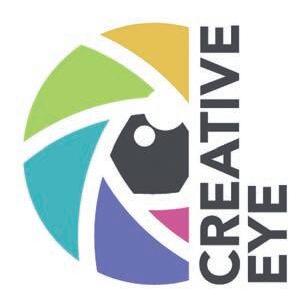
CONTACTS



















 Spring Greens
Spring Greens


















 Rob Kershaw ARPS
Rob Kershaw ARPS




























































































 Ross 116 Golden Islet by Tracy Ross Ross 116 Golden
Ross 116 Golden Islet by Tracy Ross Ross 116 Golden




























